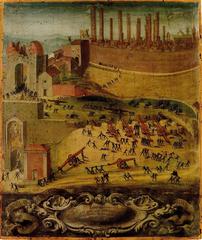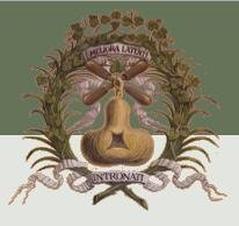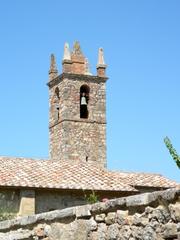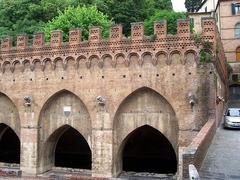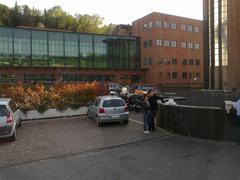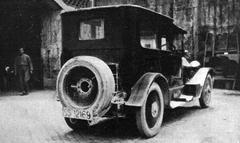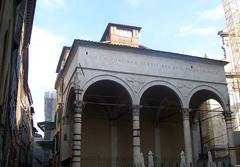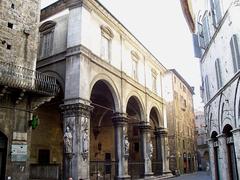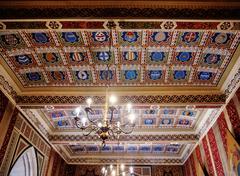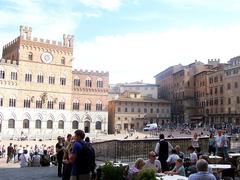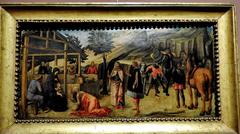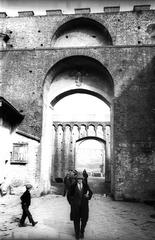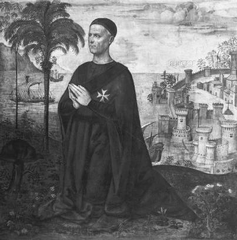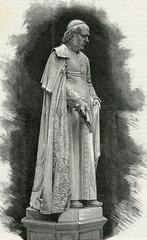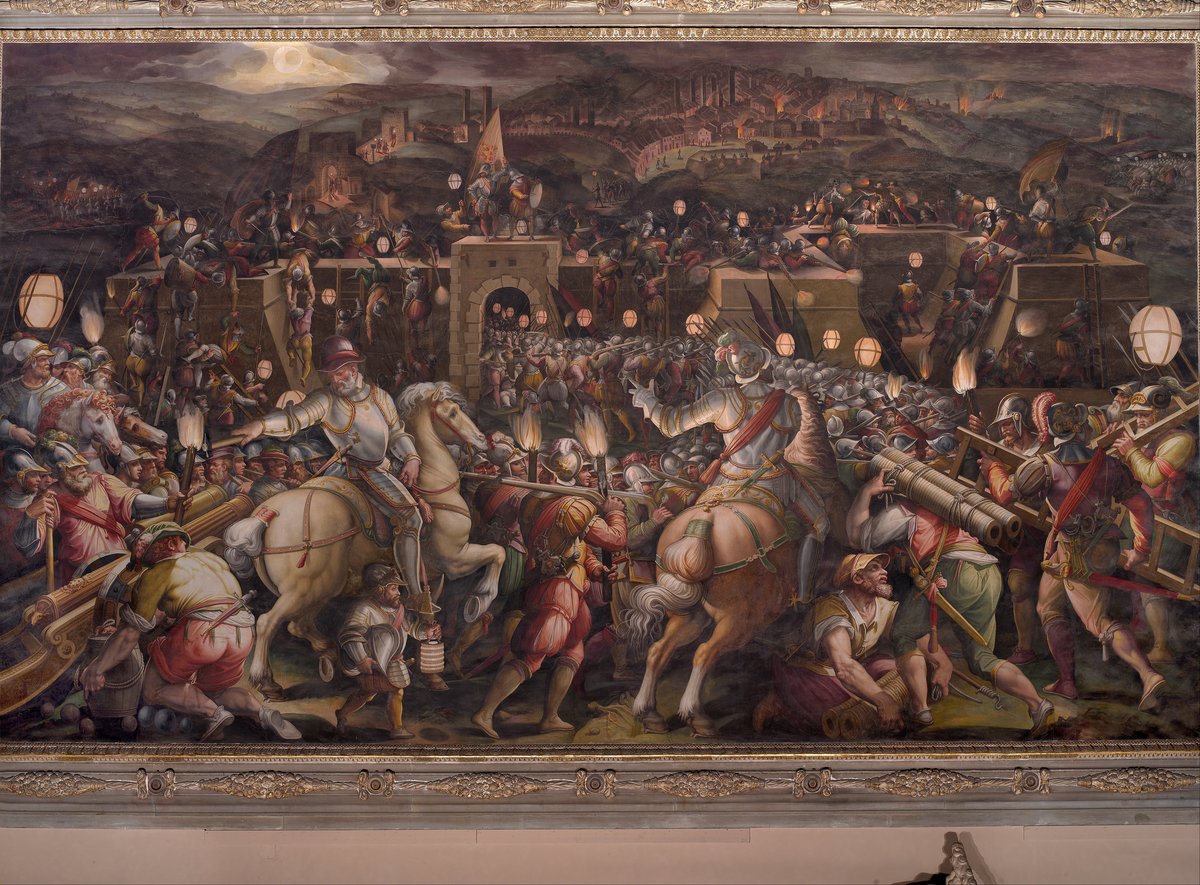
Visiting Porta Camollia: History, Tickets, and Travel Tips
Publication Date: 18/07/2024
Why Visit Porta Camollia
Porta Camollia, one of the most iconic historical gates in Siena, Italy, offers visitors an immersive journey into the city’s rich medieval and Renaissance past. Originally constructed in the 13th century, this gate was a pivotal part of Siena’s fortification system, designed to serve both defensive and commercial purposes. Positioned strategically on the northern side of Siena, Porta Camollia was the main entry point for travelers and traders coming from Florence, making it crucial for the city’s economic and military defenses (Siena Tourism). Over the centuries, the gate has undergone various modifications, particularly during the Renaissance when the Medici family added ornate decorations and inscriptions, transforming it into a symbol of Siena’s grandeur and resilience (Guided Tours of Siena). Today, Porta Camollia stands as a testament to Siena’s architectural ingenuity and cultural heritage, drawing tourists from around the world who come to marvel at its historical significance and aesthetic beauty.
Contents Overview
- Introduction
- Origins and Early History
- Strategic Importance
- Architectural Evolution
- The Medici Influence
- Role in Historical Conflicts
- Decline and Restoration
- Modern-Day Significance
- Cultural Impact
- Visitor Information
- Visiting Hours and Tickets
- Travel Tips
- Preservation Efforts
- Visitor Experience
- FAQ
- Conclusion
Introduction
Porta Camollia, one of Siena’s most iconic gates, offers a fascinating glimpse into the city’s rich medieval and Renaissance history. In this article, we will explore the historical significance, architectural marvels, and practical visitor information, including visiting hours, ticket details, and nearby attractions. Whether you’re a history enthusiast or a casual traveler, Porta Camollia is a must-visit site in Siena.
Origins and Early History
Porta Camollia, one of the historic gates of Siena, Italy, has a rich history dating back to the medieval period. The gate was originally constructed in the 13th century as part of Siena’s extensive fortification system. Its primary purpose was to serve as a defensive structure and a controlled entry point into the city. The name “Camollia” is believed to be derived from the Latin word “Camullia,” which refers to a nearby hill.
Strategic Importance
Porta Camollia held significant strategic importance due to its location on the northern side of Siena. It was the main gateway for travelers and traders coming from Florence, making it a critical point for both commerce and military defense. The gate’s position allowed Siena to monitor and control the flow of goods and people, contributing to the city’s economic prosperity and security.
Architectural Evolution
Over the centuries, Porta Camollia underwent several architectural modifications to enhance its defensive capabilities and aesthetic appeal. The original structure was relatively simple, but as threats evolved, so did the gate. In the 16th century, during the Renaissance period, the gate was extensively renovated. The most notable addition was the imposing archway, adorned with intricate carvings and inscriptions. This renovation was commissioned by the Medici family, who ruled Siena at the time.
The Medici Influence
The Medici family’s influence on Porta Camollia is evident in the gate’s design and inscriptions. The archway features the Medici coat of arms and the Latin inscription “Cor magis tibi Sena pandit,” which translates to “Siena opens its heart to you more than its gate.” This inscription reflects the Medici’s attempt to portray Siena as a welcoming and prosperous city under their rule. The Medici also added decorative elements such as statues and reliefs, further enhancing the gate’s grandeur.
Role in Historical Conflicts
Porta Camollia played a crucial role in several historical conflicts, particularly during the wars between Siena and Florence. One of the most significant events was the Battle of Camollia in 1526, where the Sienese forces successfully defended the gate against a Florentine attack. This victory was a testament to the gate’s strategic importance and the resilience of Siena’s defenders.
Decline and Restoration
In the centuries that followed, Porta Camollia experienced periods of neglect and decline. The gate’s defensive role diminished as new military technologies rendered traditional fortifications obsolete. However, recognizing its historical and cultural significance, efforts were made to restore and preserve Porta Camollia. In the 19th and 20th centuries, restoration projects aimed to repair structural damage and restore the gate’s original features.
Modern-Day Significance
Today, Porta Camollia stands as a symbol of Siena’s rich history and architectural heritage. It is a popular tourist attraction, drawing visitors from around the world who come to admire its historical significance and architectural beauty. The gate also serves as a reminder of Siena’s strategic importance in medieval and Renaissance Italy.
Cultural Impact
Porta Camollia has left a lasting impact on Siena’s cultural identity. It is often featured in local folklore, literature, and art, symbolizing the city’s resilience and pride. The gate’s historical significance is celebrated during local festivals and events, where reenactments of historical battles and ceremonies take place.
Visitor Information
Visiting Hours and Tickets
Porta Camollia is open to visitors year-round. While there is no entrance fee to view the gate itself, guided tours may have associated costs. It is advisable to check the Siena Tourism website for the latest information on visiting hours and ticket prices.
Travel Tips
- Best Time to Visit: Spring and autumn are ideal for visiting Porta Camollia, as the weather is pleasant and the crowds are manageable.
- Nearby Attractions: While in Siena, consider visiting other historical sites such as the Piazza del Campo and the Siena Cathedral.
- Accessibility: Porta Camollia is easily accessible by foot from the city center. Public transportation options are also available.
Preservation Efforts
Preserving Porta Camollia is a priority for local authorities and heritage organizations. Ongoing conservation efforts aim to protect the gate from environmental damage and ensure its structural integrity. These efforts include regular maintenance, monitoring, and restoration projects funded by both public and private entities.
Visitor Experience
For visitors, Porta Camollia offers a unique glimpse into Siena’s past. The gate’s impressive architecture and historical significance make it a must-visit attraction. Guided tours provide in-depth insights into the gate’s history, architectural features, and role in Siena’s development. Additionally, informational plaques and exhibits near the gate offer valuable context for visitors exploring the site on their own.
FAQ
- What are the visiting hours for Porta Camollia? Porta Camollia is open to visitors year-round. Check the Siena Tourism website for the latest information on visiting hours.
- How much do tickets to Porta Camollia cost? There is no entrance fee to view the gate itself, but guided tours may have associated costs.
Conclusion
Porta Camollia’s history is a testament to Siena’s rich cultural and architectural heritage. From its origins as a medieval defensive structure to its role in historical conflicts and its modern-day significance, the gate remains an enduring symbol of Siena’s past. Preservation efforts ensure that future generations can continue to appreciate and learn from this remarkable historical landmark. For more detailed information on Porta Camollia, you can visit the official Siena Tourism website or Guided Tours of Siena.
Cited References
- Porta Camollia - Visiting Hours, Tickets, and Historical Significance in Siena, 2024, Siena Tourism
- Discover Porta Camollia - Visiting Hours, Tickets, and Historical Insights in Siena, 2024, Guided Tours of Siena
- Visitor Tips for Porta Camollia, Siena - Best Times, Tickets, and Nearby Attractions, 2024, Siena Comune

